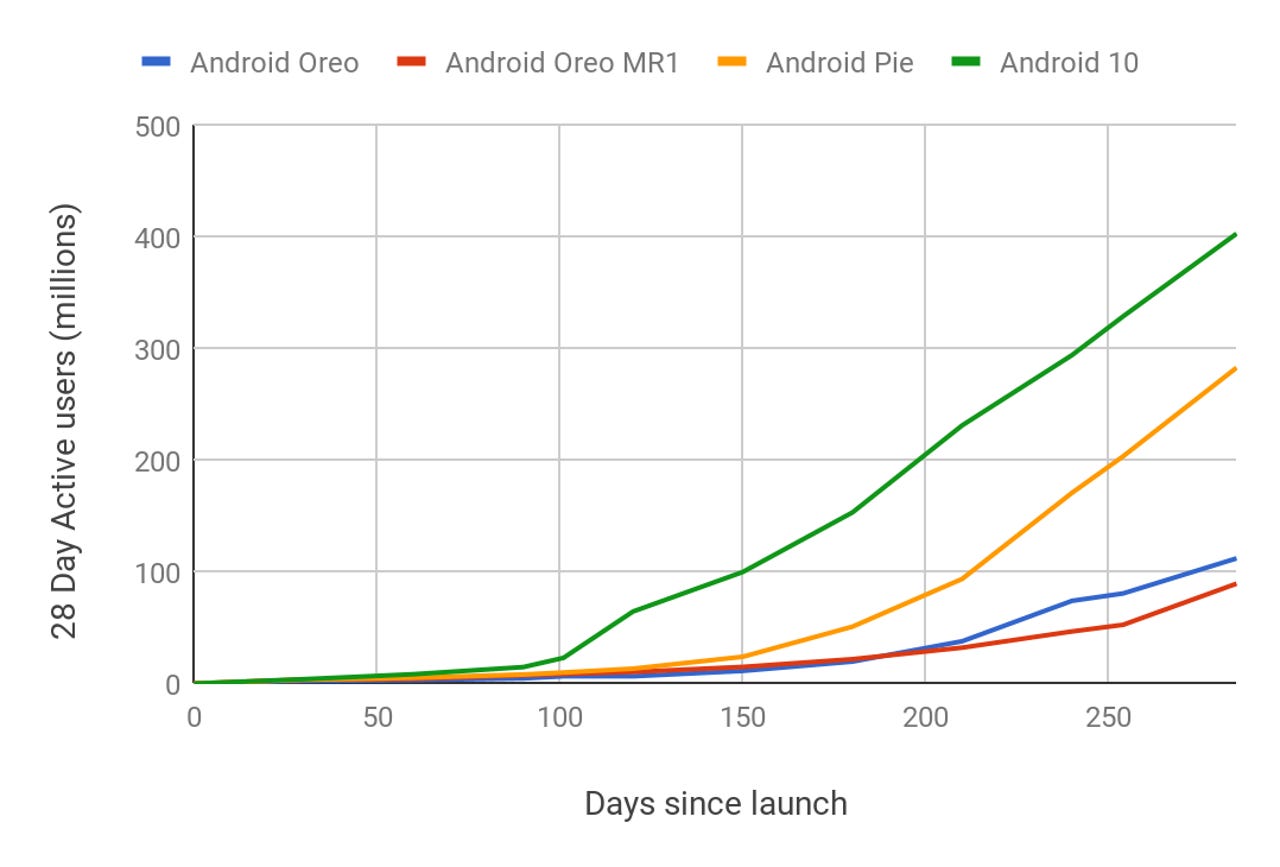Android 10 saw faster uptake but Pie still rules the Android roost


The uptake of Android 10 is blitzing the rate at which prior versions of Android were adopted, but it is far from the world's best practice.
On Thursday, Google said in a blog post that Android 10 was getting onto devices faster than its predecessor named Pie.
"Android 10 was running on 100 million devices 5 months post launch -- 28% faster than Android Pie," it said.
The reason for the increase pinned on efforts, such as Project Treble in Android Oreo that made the codebase more modular, generic system images introduced in Pie, and Project Mainline that arrived in Android 10 to allow updating of system components from the Play Store.
Taken together, it means phone makers have to do less work to get newer versions of Android out the door than they did previously.
However, unlike Apple, which boasts about having over 90% of its iPhone user base on its latest major version on devices younger than four years old, Android has long since stopped giving a breakdown on the different versions used among its Android install base.
Google said in May last year that it had 2.5 billion active Android users -- using this number, the figure with Android 10 is around the 16% mark.
People paid to make guesstimates on Android install bases -- like Statcounter and Statista -- putting the percentage on Pie at 22% and 8.3%, respectively.
In both cases, the version of Android with the largest install base remains Android 9 Pie.
The blog post added in Android 11 the number of components updatable via the Play Store would increase to 21 and generic kernel image can be used across all Android devices. The next version of Android will also introduce a new over-the-air update mechanism dubbed Virtual A/B that will become the only way to update the operating system.
"Most OS updates are not delivered via Google Play. Instead, they use separate third-party Over-the-Air (OTA) services that differ among the various OEMs. These services use a mechanism that, while very space efficient, has the disadvantage of being slow to apply, rendering the device inoperable for the duration," Google said.
"To solve this problem, in Android Nougat we launched a mechanism called 'A/B OTA' (aka Seamless Updates). A/B OTAs have the advantage of appearing to be near-instant from the user's perspective, since they apply in the background and become active on the next reboot. However, they doubled the amount of storage reserved for the OS itself, limiting adoption among OEMs."
Virtual A/B combines the two approaches, with Google stating it is working with phone makers on the feature.